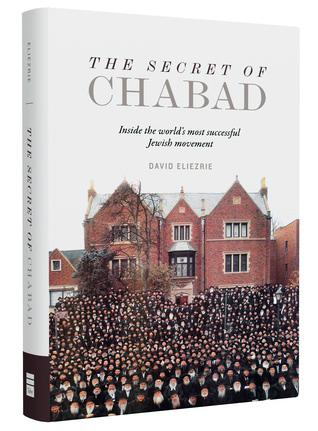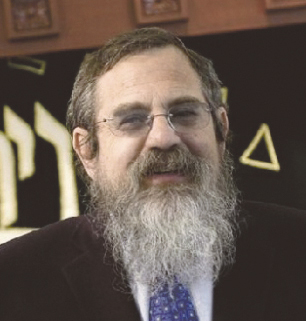Past, present and future of Chabad

By Joshua Runyan, Washington Jewish Week
It’s been 13 years since Rabbi Eric Yoffie, then the president of the Union of Reform Judaism, pointed to the Chabad-Lubavitch movement as a source of inspiration for his own movement’s synagogues and congregants.
“It is hard for me to say this, but I will say it nonetheless,” he told attendees of the Reform biennial conference in 2003. “We must follow the example of Chabad.”
Since then, numerous studies have indicated the growth of Chabad in cities such as Miami, in Jewish day school education, and in the online sphere.
Against such a backdrop comes a new book attempting to explain the reasons behind such growth — and what it portends for the future of the movement, Judaism in general, and the American Jewish community.
As its title suggests, Rabbi David Eliezrie’s The Secret of Chabad: Inside the world’s most successful Jewish movement seeks to answer those who want to know why a movement with roots in 18th-century Russia has become so commonplace in Jewish life that a long-running joke has Chabad being as ubiquitous as Coca-Cola.
To be sure, other books have also explored the Chabad phenomena: Sue Fishkoff’s The Rebbe’s Army, for instance, analyzed the intellectual, philosophical and psychological underpinnings of the uniquely Chabad institution of shlichut, in which husband-and-wife couples become emissaries, founding schools, synagogues and treatment centers across the globe.
Several books released last year in proximity to the 20th anniversary of the passing of the seventh Lubavitch leader, Rebbe Menachem M. Schneerson, looked at the animating presence of the Rebbe and his teachings that provide the spiritual heft of the movement.

Eliezrie, however, focuses on the Lubavitchers themselves, from the rank and file to the emissaries like him — a veteran shaliach (the preferred term for emissary). He is the director of North County Chabad in Yorba Linda, Calif., and president of the Rabbinical Council of Orange County and Long Beach, sits on the board of the Jewish Federation and Family Services of Orange County, and serves as a liaison between Chabad-Lubavitch and the Jewish Federations of North America.
His thesis is that the self-sacrifice of previous Lubavitch generations that saw the movement break through the oppressions of the Iron Curtain lives on in a spirit that puts a premium on individual action and responsibility.
“Lubavitchers can do anything,” he told me last summer, after the book’s release by Toby Press. It was a statement that, while bombastic, represents his true belief. And it’s a belief I’d say is shared by most Lubavitchers. How else could a young North American couple today be asked to take up a post in the farthest corners of Russia, where they’d be expected to raise their children to the strictest of religious standards and to remain for decades?
Weaving his case through several episodes from the movement’s modern history, Eliezrie bases his assertions not only on his own expertise, but on copious interviews, all documented in endnotes. A thorough index, however, is lacking.
Perhaps most revolutionary is his conclusion, which asserts a realigning of Jewish life in the United States. He predicts the overall decline of the current denominational system that places Jews in orderly categories of Reconstructionist, Reform, Conservative and Orthodox and the supplanting of it by a new system oriented between liberal Jews on the left and today’s Orthodox on the right, with the middle ground being occupied by Chabad and those drawn to its combination of unwavering tradition and welcoming spirit.
“In the center of the community,” he writes, “will be a new paradigm. Significant numbers of Jews, who are either observant or traditional, will elect to affiliate with Chabad.” He points to his own experience in Orange County, Calif., where a network of 15 Chabad centers draws three times the attendance during the High Holy Days as the local Conservative synagogues.
“Bottom line, in the next generation, a significant percentage, if not the majority of Jews engaged in Jewish life, will either belong to Orthodox synagogues,” he surmises, “or be on a trajectory toward fuller observance through their involvement with Chabad.”
The JCC’s Cultural Arts & Book Fest presents author Rabbi David Eliezrie on Thursday, Nov. 17 at 7 p.m. at the Boonshoft CJCE, 525 Versailles Dr., Centerville. $5 in advance, $8 at the door. R.S.V.P. to 610-1555 or at jewishdayton.org.
To read the complete November 2016 Dayton Jewish Observer, click here.

